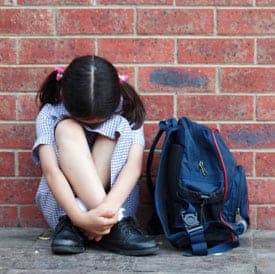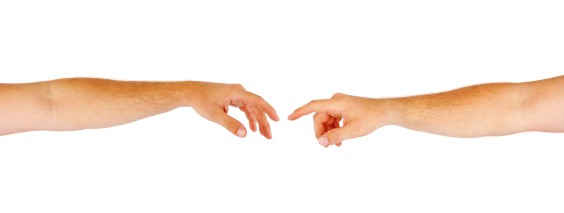In the movies, a bully is often seen as a larger child who picks on the smaller children in some physical manner, such as stuffing them in lockers, stealing their lunch money, and so on. In reality, while some types of bullying have a physical element, there are actually many other ways in which a child can be bullied, and they all have the potential to cause long-lasting harm.
Types of Bullying
- Physical. While biting, punching, and kicking all fall under physical bullying, it also encompasses other physical acts as well, such as destruction of property. This is one of the most common types of bullying among younger children from kindergarten through middle school.
- Taunting and teasing. Verbal bullying makes up nearly half of all the bullying that goes on in schools. It includes name calling, nasty comments about a child’s race, religion, or socioeconomic standing, and any other cruel words designed to belittle a child.
- Rumor-spreading. When one child says something that isn’t true about another child with the express intent to ruin his or her reputation, it is considered bullying. Some experts even consider breaking a confidence to be a form of bullying, although it really depends on the context and reason behind sharing a secret.
- Threats of physical or mental harm. Not all types of bullying involve direct actions. Threats of action designed to intimidate a child into cooperating with the bully are often just as bad. While the bully may not actually be causing physical harm, the emotional impact is enough to leave the bullied child feeling helpless and scared.
- Social isolation. Children often form cliques as young as kindergarten these days, and it seems someone is always left out. While forming these social groups is a natural part of growing up, and it can take time to find the right fit for every child, when one child is purposely left out and isolated, it can be emotionally devastating.
- Cyberbullying. Cyberbullying is one of the least understood types of bullying because it only came into existence in the last two decades. It encompasses any type of emotional bullying that uses the internet or cell phones to intimidate or humiliate another child. Examples include sending nasty messages through text or email or posting cruel things on a teenager’s social networking page. It is one of the fastest growing types of bullying, and is affecting children at younger ages every year.
Group Bullying vs. Individual Bullies
The types of bullying also encompass the actual bullies themselves. While individual bullies are still way too common, more and more bullies are gathering in groups. This type of bullying is typically seen in high schools, when one social group of teenagers picks on other social groups. In the movies, athletic groups like football stars and cheerleaders are often viewed as the bullies, while smart children and “social outcasts” are viewed as the victims. In the real world, it’s really not that cut and dry. It is unfair to assume that just because a group of children excel at sports, they can never be the victim of bullying; or just because a child is smart, they can never become a bully themselves. Any social group that enjoys putting down others is engaging in bullying activities.
For more information on bullying, check out this great video on how to help your child cope.



Your ideas and writing style is very impressive and different. I like your post very much. Thanks and keep moving !!! :)
Thanks for raising awareness of the different ways bullying can manifest.
My 6 year old was displaying some bullying tendencies, and when we investigated we discovered he was being bullied and was basically passing on his hurt to someone else. We think we’ve dealt with both problems – we hope!
Wow. This is such a great post. I’m going to have to share this one! Thanks so much.
I actually think that emotional bullying is way more damaging than physical bullying. It’s harder for the victim to retaliate because the other child/ren always have “I didn’t hurt him!” as a retaliation. I think (as I think for most things) that parental involvement is the key to solving many of these problems. I will certainly always be making sure that my son is neither victim nor instigator if there’s anything I have to do with it!
You nailed it Kathryn. My son was bullied emotionally. He was called names and rejected. Fortunately enough, we were here to support him.
Great post! Thx!
Bullying is not always understood, the many ways that bullying can take place. Kids are subjected to a lot. Thanks for sharing this information; the more people get the facts out there, the better chance we have of eliminating bullying ways.
You are very welcome Stacey. Unfortunately my son was bullied but we did not catch it at first. We thought it was just teasing. We are trying to raise awareness about this difficult subject